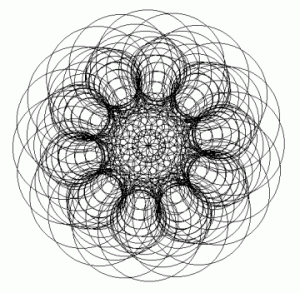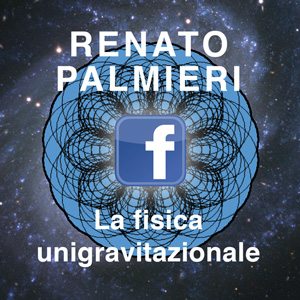Chapter 1.1 A four-century phantom.
We could make it simple by saying that current physics doesn’t convince us, simply because a “current” physical science does not exist.
There is instead a physical science that dates back to four centuries ago and has been mummified by its modern heirs and militants. These people made of the relics of the past an object of worship, so much so that all the theories pretending to subvert the ancient glorious pillars of physics (relativity etc…) are in fact closely linked to Galileo’s and Newton’s benchmarks.
In any case, as we will see, a series of phenomena and speculations, belonging to Research, but also to each one’s everyday experience, have completely knocked down those staple principles, which anyway keep being regularly underpinned with flawed theories by the supporters of nowadays immobilism, that proved to be much worse than medieval Aristotelianism.
Obviously, nobody questions Galileo’s and Newton’s importance. They are among the greatest innovators of human thought, apart from being two outstanding pioneers who reaped the fruit of a new way to conceive Science. This was given by associating mathematical measuring to experience, leaving aside the hypotheses (Newton: Hypotheses non fingo). This joint method resulted in the well-known and extraordinary development of technology.
Paradoxically, though, this new method prevented scientists from acquiring a real knowledge of the physical world. The following example should be enough to understand. The famous newtonian formula F=ma (force is equal to mass per acceleration), which laid the foundations of Dynamic Physics, will never help to identify the origin of whatever force: today, nobody knows what Force really is. Apart from being empirically used and measured, Force is still a fairly unknown entity. The concept of Force is still linked to the idea of physical strength, moreover, multiplying two quantities to obtain a third entity which is different from the previous two, is not productive is terms of knowledge.
The same is valid for all the physical theories that stemmed from Newton’s formula ( Eddington observed that we talk all the time about a not better identified entity that we call Energy without knowing what it really is).
Contemporary Science imposes this absurd limit, heavily weighing upon the homo sapiens’ intellectual skills, and also makes of it a methodological prohibition.
Today we are urged to reckon that the above mentioned way to conceive science, despite proving to be quite fertile up to now, should not exist any longer. It keeps colliding against insurmountable limits, also in terms of strictly technical results, research directions and domains of knowledge (biology, medicine, astrophysics etc…). To overcome these limits we urgently need to replace the current paradigm of Physics knowledge with a brand new one, which will make its way through the third Millennium.
Contemporary theories rely on the glorification of technological progress and on the worship of by now useless idols. As we mentioned above, the collapse of the traditional theoretical principles is simply overlooked or either diverted or merely ignored, due to a lack of fulfilling information.
So, Galileo’s law of gravity ( same acceleration force/different masses) has been denied by further studies of Eötvös’s experiments ( an accurate analysis shows that smaller masses are subject to stronger acceleration forces due to the effect of gravity) : this means that Einstein’s Relativity is groundless, since it is based on the above mentioned and flawed “principle“(gravitational mass = inertial mass). To avoid failure, he identified a “Supercharge” or “Fifth force”, antagonist to gravity: a sort of “levitation force”, worthy of the most miraculous Saints. There were no further investigations of this inexplicable wonder.
The “cold fusion” (that is a low-temperature nuclear reaction), stubbornly encumbered by scholars, caused the 1989-foundations of official electromagnetism to collapse. In spite of this, huge amounts of money are still being spent on unfruitful projects, like the construction of enormous accelerators of particles.
We learnt from edition no.308 of a high profile scientific journal, called LE SCIENZE ( April 1994: The metaphysics of particles, by John Horgan), that the U.S. Congress has (luckily) blocked to one/fifth in Texas the construction of a Supercollider, having a 86-kilometre circuit and a cost of 11 billion dollars.
The regret of the author of this article is understandable. He informs us that to unify gravitation with the other cosmic Forces, an accelerator of “the circumference of a thousand light-years” would be needed: that is merely 9.500.000 Km! Here is where the metaphysical nature of the title takes root.
If from the macrocosm we look at the microcosm, Heisenberg sentence strikes us: “The atom, basic unit of modern Physics, can be represented only through a differential equation in a pluri-dimensional space. Any rendering of the atom we might be able to conceive is mistaken in itself”.
In conclusion, “Current Physics” has just killed itself – as we had predicted– by giving spur to two unknowable entities: gravitation and the atom. A mere phantom is all that remains of them.
Chapter 1.2 Modern theories: “a three cards game”.
The genetic mechanism of modern physical theories stemmed from Empiricism, but also from a methodological rejection of knowledge, as told in Chapter 1.1.
It will be particularly interesting to sweep away some peculiar aspects, which are not entangled in the “hypnotic” condition in which the current opinion over the real state of theoretical physics is imprisoned.
The institutional way in which modern theories come to life and develop is the following:
Considering some given conditions, when we observe the recurrence of a phenomenon, and the fact that this recurrence can be translated into a mathematical formula, we must leave aside any kind of cause if we want to measure, calculate and potentially reproduce the same phenomenon ( as in astronomical events, not always is this possible). Without a determined cause ( Newton: Hypotheses non fingo, Chapter 1.1, ndr), the phenomenon becomes a “principle”, and then the basis upon which a theory is built, apart from being also a never-stopping generator of related principles and theories.
Once cleared any doubt about their origins, modern theories also want to reach immortality. In fact, should that basic principle fall for unfavorable reasons, according to logics, all the principles and theories deriving from the first and most important one should fall too. To prevent this catastrophe from happening, we can find three possible countermeasures:
a) Invent a well-fitting ad hoc principle and with it a new coherent theory.
b) Desperately reject what denies the principle in question.
c) Try to minimize the causes of the crisis.
This method, widespread but unfavorable to knowledge, was first put into practice by Galileo and Kepler.
The former, dropping stones from the tower of Pisa, noticed that, due to the effect gravity, all masses underwent the same acceleration Force, whatever their size was. Should he had found the reason for this phenomenon, there would have been no need for further, obstinate experiments, from Newton ( Newton’s tube) up through Eötvös (1922) and his recent study of Newton’s experiments. They made a principle of a phenomenon whose cause was unknown to them, in this point lie the origins of the Principle stating the equivalence between gravitational and inertial mass.
From the merely empirical (we must recall this) observations and principles by Galileo and Kepler, Newton derived his law of universal gravitation : a theory that doesn’t rely upon the knowledge of physical causes, as it should be, but on the results of empirical observations upgraded to the state of “principles” or even “postulates”.
So, in 1986, thanks to the revision of Eötvös’ experiments the principle of equivalence proved to be false. Renato Palmieri, owner of this website, has been fully aware of this since 1973 (this concept can be broadened in the chapter 2.6). Empirical observation, that is the base of that “principle”, can be approximately valid as far as a limited range of phenomena are concerned. These phenomena have to do with bodies having a relatively small mass with respect to a disproportionately bigger gravitational field; an example could be given by the planets and the sun as well as by Galileo’s stones and the Earth.
There is no point in saying that official physicists have cautiously avoided to disable all the theories deriving from the already mentioned collapsed principle and going from Galileo, through Newton, up to Einstein. On the contrary, they resorted to the above exposed lifesaving techniques, better discussed in Chapter 2.3.
Paradoxically, it is the application of their flawed and deceptive method, which we called “the three cards game”, to be described today as the only correct way to make “real Science”. The examples we could mention are countless: we will only cite a few of them, even if our following observations will automatically highlight an endless number of incoherencies, dealing with “electric charges”, “nuclear forces”, “antimatter”, “virtual particles”, “indetermination” and so on. Each incoherence constantly shows that mathematical quantifications always hide a lack of information as far as the nature of real phenomena is concerned.
Let’s just recall the fact that the inability to explain a supposed anomaly (like showed by Michelson and Morley in their experiments on the speed of light (1881-1885)) generated the relativistic principle according to which the speed of light couldn’t be compared with the speed of bodies. This was immediately denied by the light of the stars. At this point, a relativistic concept was created to preserve the old way of conceiving Science, rather than admitting the error. This error led thousands of scientists to ignore the difference between the undulatory (interferential devices) and corpuscular (telescopic devices) light motion.
According to the relativistic thesis, Einstein’s photon, lacking a mass (otherwise it would have an infinite mass in relation to its speed) should neither have “energy” (E = ½ mv2) , but, as we have seen, it miraculously acquires a mass (in the photoelectric effect) thanks to the also empirical formula based on the association of mass with frequency ν (ni in the Greek alphabet) through the “quantum of action” h (E = hν,by Planck), being h a number obtained by merely instrumental explorations.
The displacement of Mercury’s periapsis with respect to the renowned laws of celestial mechanics indicates itself as cosmological evidence showing the validity of the relativist theory. It should be known anyway, that the same is not valid for Mars, but this incoherence is obviously ignored (you can read more about this topic on the Italian Encyclopedia, under the headword “Relativity” or, more specifically, in our essay “Gravity and the other forces”, mentioned in our bibliography).
The same insufficient explanations are put forward to state the reliability of all the supposed further proofs of Relativity. This means that, the world of official Science has once again refused to recognize that the effective collapse of the pillars of this theory disables not only the theory in itself, but also all the principles deriving from it, like “time dilation” (“the twins paradox”, “(not Swiss) watches on flying planes”, “muons’ average life” etc…) or the “relativistic increase of the mass”.
Chapter 1.3 Time and mass: miraculous yeast.
Here we will deal with two phenomena whose true nature has been distorted with the help of mathematical tricks, to make up for the incapacity to explain their characteristics in physical terms.
a) Time
The players of the three cards game have been involved in a harsh debate on the relativistic-time issue, which proved to be quite controversial. The Italian magazine L’ Espresso of April 9th, 1972 (edition no. 15), came with an attachment: “Colore”, where people could read an article by Giulio Cortini. Its title was: “The clockmaker of the Equator”. It told about a series of experiments carried out through atomic clocks, flying around the Equator in opposite directions, to prove the relativistic-time dilation.
In this article, Cortini himself complains about his mate-physicians, supporters of the relativistic thesis like him, who didn’t share the outcome of those experiments due to theoretical different opinions dealing with the synchronization or non synchronization of the two watches after the tour. On this point the debate could go on forever, for this reason it is no use investing more and more money to finance costly and useless experiments.
The Espresso magazine dared to publish, in 1972, a letter of protest by the author of these pages, ignoring his further replies.
The fact shows all its inconsistencies in another article (A new interpretation of the paradox of the clocks, by Angioletta Coradini), published on the magazine Sapere, edition no.750. In this article, the question undergoes a long debate. The conclusions completely buffeted Cortini’s opinions; they ended with the following sentence: “ … therefore, according to this new interpretation, both the shortening of the dimension and time dilation are to be considered “optical illusions” of a still observer of moving objects “ . If they say so! We must recall, anyway, that the “shortening of the dimension” along with speed is just another of relativists’ mistaken convictions.
But let’s get back to another of relativists’ key point: muons’average life, which lengthens according to their speed.
First and foremost, we have to explain to the readers what the expression “average life” stands for. Physicians themselves fail to grasp its meaning. What to them is an “average life”, is instead an “average agony “of particles, that is the time needed for their degradation -in better words- the time range between their first material appearance and their successive disintegration and transformation. Renato Palmieri could not get Contini to understand, in the above mentioned querelle, that the muon does not come to life in the moment we are able to see it. That exact moment is when it begins to die. God knows what happened before then to that corpuscle and its subatomic structures.
Sometimes contemporary physicists rely so much on their convictions to rebuff even the possibility of other forms of knowledge.
Here is a physical either then supernatural explanation of this phenomenon. It is renowned that, in a mass spectrograph – being the mass a constant- faster particles are less diverted than slower particles.
The entity of the diversion tells us about the entity of the interactions between the particles in question, the field they are crossing and other particles. This is an indisputable fact that we are able to explain in unigravitational terms: faster particles elude the external attraction forces more easily. When the external interactions become stronger (to them corresponds a minor speed of the particles), particles degrade more rapidly due to the action of a stronger disintegrating effect of those interactions. It is just for this reason that faster muons have a longer “agony”; they do not have to thank Einstein for this!
b) Mass
Modern theories constitute the most “logic” chain of mistakes one could imagine. They actually mislead the interpretation of natural phenomena and experimental results.
The first relativistic error lies in the misinterpretation by scientists of Michelson-Morley’s experiments, according to which undulatory light produced the same effects as corpuscular light. This has led them to think that the speed of light was incompatible with the velocity of normal bodies. This mistake has been favored by the fact that contemporary Physics utterly ignores the actual structure and functioning of undulatory light.
From this stems a further error: the exclusion, by scientists, of the idea standing at the base of those experiments that is the existence of a medium through which light propagation was possible. Our ancestors called this medium “ether”. Being these considerations unfitting to their goals, contemporary scientists ceased to believe that “ether” was a natural reality.
This mistaken decision has proved to be an insult added to injury, because, every time they bump into ether, they are forced to ignore its existence through complex and twisted mathematical calculations that should state the validity of their blind convictions.
In the void of particle accelerators, such particles, although undergoing a constant magnetic field, do not show a constant acceleration as implicitly requested by the formula F=ma, but a decreasing acceleration that reaches nought on the limit of light speed. This means that the speed of the particles increases slower and slower and becomes constant as it gets close to the speed of light. Yet, physicians, instead of considering this phenomenon as the proof of the existence of a medium able to resist, even in the void, to the movement of the particles, that is the existence of a decreasing physical force growing with the speed of the particles to reach a vector balance with the agent magnetic force, in other words until a constant speed is reached.
They want us to believe in the mathematical increase of m in the newtonian formula. This would be equal to saying that mass would become infinite in the product ma, when a = 0, with respect to only one agent force F, that is constant in the magnetic field.
All physical scholars should consider the following elementary example. In the accelerator, particles behave, with respect to ether, like a body falling from a plane with respect to air. Gravitational acceleration diminishes due to air resistance, which, in its turn, grows due to the increase of the speed of the body as it falls until a balance between gravity and air resistance (=a constant speed of the falling body) is reached.
It is obvious that, should I insist in denying the existence of air, I would invent a “relativity of monkeys”, which know nothing about the existence either of air or of ether (unless they know more than us about contemporary Physics). In this case, I would say that the mass of the body grows according to its speed while falling, tending to an infinite value as it approaches a constant speed. At this point I would wonder if insisting upon the concept of relativity is really worth the effort.



